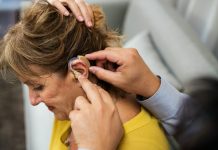
Major depressive disorder (MDD) is a widespread mental illness that affects over 8% of Americans.
The condition can look very different from one person to another, creating a major challenge for diagnosing and treating it.
While recent research has made progress in understanding the brain activity underlying various subtypes of depression, there is much yet to be discovered.
A study published in Biological Psychiatry brings new hope by identifying multiple subtypes of MDD using brain imaging.
Brain Imaging Unveils Depression’s Many Faces
Dr. John Krystal, the editor of Biological Psychiatry, praised the study. He said it offers leads that can be pursued in subtyping depression based on functional magnetic resonance imaging (fMRI) tests, which measure the degree of coordination across different brain regions.
In the study, researchers used resting-state fMRI data collected from over 1,000 MDD patients and over 1,000 healthy controls.
The researchers used the so-called normative model, which uses data from a large reference population to quantify individual deviations.
The team studied the functional connectivity among different brain regions, mapping individual functional deviations in MDD patients compared to the normative prediction across different ages.
Two Neurophysiological Subtypes of Depression
Senior author Dr. Mingrui Xia from Beijing Normal University said, “This approach led to the identification of two reproducible neurophysiological subtypes exhibiting distinct deviation patterns, depressive item scores, and longitudinal treatment predictability.”
One group of patients showed severe positive deviations—indicating increased brain connectivity—in the default mode network, limbic, and subcortical areas, and negative deviations in the sensorimotor and attention areas.
The second group featured a milder, opposite pattern of deviation, emphasizing the heterogeneity of depression at the neurophysiological level.
Towards Biomarkers for Depression
The work is especially important because it moves the field toward finding biomarkers, or biological markers, of depression.
At present, diagnosing, treating, and predicting the course of depression all rely on patients’ reported clinical symptoms. Biomarkers could vastly improve all of these aspects of treatment for MDD.
Dr. Xia said, “These findings shed light on the diverse neurobiological mechanisms from a connectomics perspective underlying the complex clinical heterogeneity observed in individuals with depression.”
Personalized Treatment for Depression
The potential implications of this research are far-reaching, offering valuable insights into the development of imaging-based candidate biomarkers.
“These biomarkers have the potential to guide future precise diagnostic and treatment strategies tailored to each patient’s specific neurophysiological subtype,” Dr. Xia added.
“By embracing the concept of neurophysiological subtypes, we can potentially revolutionize the field of mental health by enabling clinicians to personalize treatments based on an individual’s unique connectome characteristics.
This approach opens up new avenues for precision medicine and holds the promise of improving therapeutic interventions for depression,” he concluded.
If you care about mental health, please read studies about 6 foods you can eat to improve mental health, and B vitamins could help prevent depression and anxiety.
For more information about mental health, please see recent studies about how dairy foods may influence depression risk, and results showing Omega-3 fats may help reduce depression.
The study was published in Biological Psychiatry.
Copyright © 2023 Knowridge Science Report. All rights reserved.



